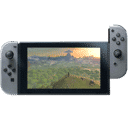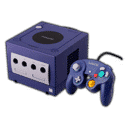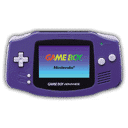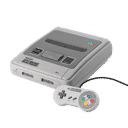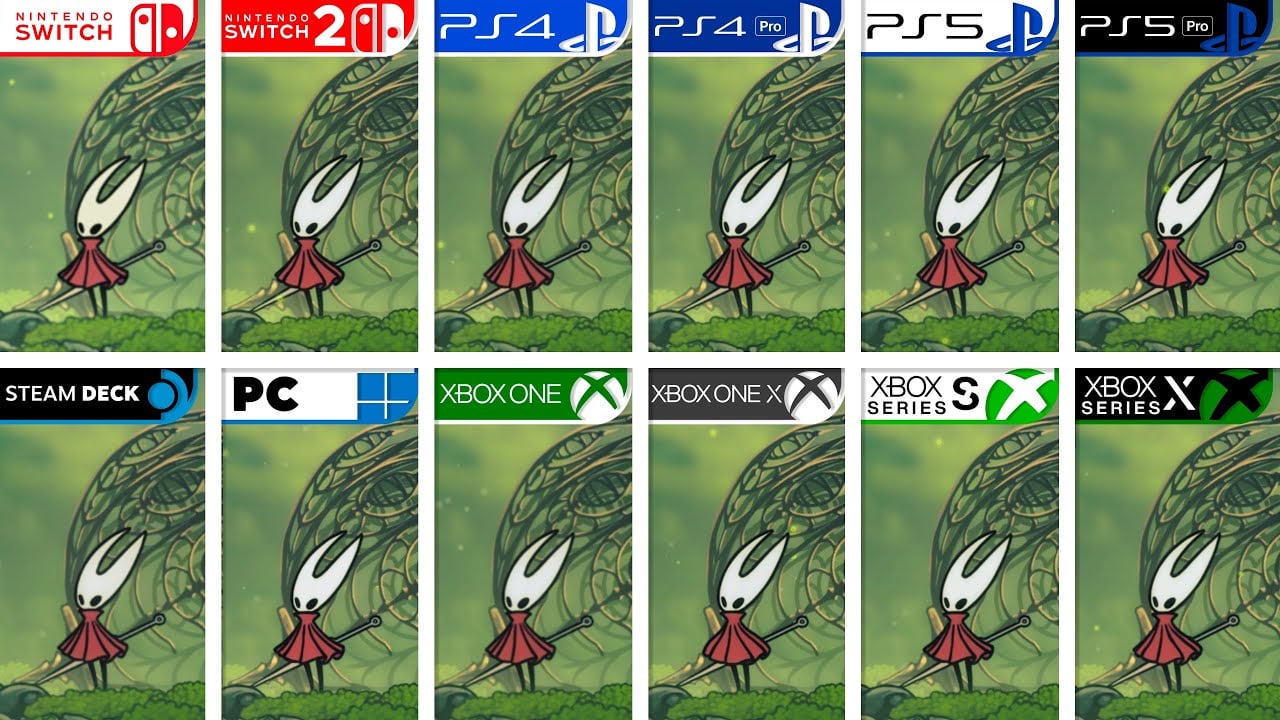
Samenvatting:
Hollow Knight: Silksong is eindelijk op elk groot platform verschenen, en we hebben allemaal de discussies gezien over “welke versie moet ik kopen?”. Hier is de nuchtere uitleg. Op Switch 2 is er een strakke 120Hz TV-modus voor boterzachte beweging, plus een optie met hogere resolutie voor wie scherpte boven pure snelheid verkiest. Op moderne consoles voor de huiskamer zoals PS5 en Xbox Series X|S leunt de ervaring op een zuivere 4K-presentatie en bijna instant laadtijden, met VRR om alles nog vloeiender te maken. Pc is de speelplaats voor hogere framelimieten, ultrawide en fijne grafische sliders; heb je een snelle monitor en een degelijke gpu, dan gaat het helemaal zingen. Switch 1 toont de art nog steeds prachtig op 60fps met lagere resolutie en langere laadtijden, en blijft een solide manier om te spelen als je draagbaarheid belangrijk vindt en het budget compacter is. We lopen door wat er echt anders is in beweging, hoe de input-feel bij 120Hz verandert en welke instellingen het aanpassen waard zijn. Aan het einde weet je precies welke versie past bij jouw setup en speelstijl—zonder poeha, maar met praktische tips uit de praktijk.
Hollow Knight: Silksong en waar we het vandaag op kunnen spelen
Silksong verscheen op een hele reeks systemen, fijn als je kieskeurig bent over beeldkwaliteit of meerdere apparaten in huis hebt. De release bestrijkt pc (Steam en andere stores), PlayStation 4 en 5, Xbox One en Series X|S, plus beide Nintendo Switch-modellen. Die brede spreiding betekent dat de prestatiedoelen niet identiek zijn; dezelfde handgetekende scène schaalt naar heel verschillende resoluties en framerates afhankelijk van de hardware. Er zijn ook platformspecifieke extra’s: high-refresh-opties op Nintendo’s nieuwste hardware, VRR-vloeiendheid op geschikte tv’s en de bekende pc-voordelen zoals ultrawide en flexibele inputinstellingen. De prijsstelling is vriendelijk en er zijn upgradepaden die het makkelijker maken om mee te verhuizen als je later overstapt van ouder naar nieuwer. Bottom line: je hebt échte keuze—dus kies de balans van scherpte, vloeiendheid en gemak die bij jouw setup past.
Waarom visuals verschillen in een 2D, handgetekende game als Silksong
Op het eerste gezicht denk je misschien dat een 2D-game overal hetzelfde oogt—sprites zijn sprites, toch? Niet helemaal. Silksong’s look is gebouwd op scherpe lijnvoering, lagen met parallax, particle-effecten, subtiele diepteaanwijzingen en veel sub-pixelbeweging. Resolutie beïnvloedt hoe schoon die inktlijnen ogen, hoe stabiel fijne texturen blijven terwijl je rent, en hoe leesbaar de UI blijft wanneer de camera uitzoomt. Framerate verandert hoe animaties “ademen”: op 60fps krijg je pit en vertrouwen, terwijl 120Hz extra glans geeft aan bewegingshelderheid—zeker bij snelle dashes en diagonale slagen. Tel daar schermtech (OLED vs. LCD), VRR-support en zelfs controllerlatentie bij op, en dezelfde scène kan scherper of directer aanvoelen afhankelijk van waar je speelt. De art direction blijft ongewijzigd—maar de manier waarop die op je ogen en handen binnenkomt, verandert wél.

Videocredits: ElAnalistaDeBits
Switch 2: waarom de 120Hz TV-modus telt—en wanneer je de scherpere optie kiest
Op Switch 2 heb je twee grote hefbomen: een TV-modus met hogere framerate die 120Hz aanstuurt op geschikte displays, en een scherpere presentatiemodus die hogere resolutie op 60fps voorrang geeft. De 120Hz-optie is fantastisch in bazenarenas vol particles: beweging oogt schoner en je inputs voelen net iets directer—heerlijk voor strakke pogo-vensters en counterstoten met de naald. De wisselwerking is resolutie; zit je dicht op een grote 4K-tv, dan merk je dat het beeld in de high-refresh-modus wat zachter wordt. Geef je de voorkeur aan kraakheldere HUD-tekst en messcherpe lijnkunst? Schakel dan in TV-play naar de hogere-resolutie-optie en geniet van rotsvaste 60fps die de art laat schitteren. In handheld houdt Switch 2 een high-refresh-gevoel met uitstekende respons en veel kortere laadtijden dan oudere hardware—zodat door Pharloom dwalen op de bank of in de trein eindelijk zo vloeiend voelt als je ooit hoopte.
Praktische tip: kijkafstand en je tv bepalen de “beste” modus
Zit je zo’n drie meter van een 55–65″ scherm, dan valt de lagere resolutie van de 120Hz-modus minder op dan je denkt, terwijl de soepelheid direct voelt bij snelle traversals. Speel je aan een bureau op een 42–48″ OLED op ±1 meter, dan wint de scherpere 60fps-modus vaak voor tekstleesbaarheid en randdefinitie. Probeer ze allebei en kies wat jouw ogen en duimen fijner vinden—fout bestaat hier niet.
Switch 1: nog steeds een sterke manier om te spelen, met realistische verwachtingen
De oorspronkelijke Switch houdt zich verrassend goed staande gezien zijn leeftijd. Reken op 60fps gameplay met lagere resolutie dan nieuwere machines en langere laadtijden tussen gebieden. De art direction draagt het: silhouetten blijven leesbaar, animaties hebben gewicht, en de orkestratie werkt prachtig in handheld. Speel je vooral undocked en waardeer je accuduur en comfort, dan is dit nog steeds een knusse manier om Pharloom te verkennen. Let wel op vrije opslagruimte en maak waar nodig schoon voor soepel patchen. Ben je gevoelig voor blur op een grote tv, dan merk je verschil met andere platforms—maar in handheld stoort het zachtere beeld minder. Voor af en toe docked: ga iets verder naar achteren zitten en leun in de sfeer—de vibe blijft intact.
PS5 & Xbox Series X|S: grote-scherm-scherpte, VRR-vloeiendheid en instant loads
Op moderne PlayStation- en Xbox-hardware speelt Silksong in op de kracht van je 4K-display. Verwacht een scherpe presentatie met stabiele performance op PS5 en Series X, razendsnelle herstarts na een misser en VRR dat camerapan’s en particle-uitbarstingen netjes houdt op compatibele tv’s. Haptics op PS5 geven subtiele smaak aan beweging en impact, en beide platformen profiteren van lage controllerlatentie en een vlotte “boot-to-boss”. Series S houdt zich prima met een gebalanceerd doel dat consistentie op 1080p-achtige schermen verkiest. Is je woonkamer ingericht rond een goede 4K-tv en wil je bankgemak zonder gedoe, dan zijn deze versies een makkelijke aanrader: inpluggen, spelen, klaar.
Kleine maar welkome extra’s voor de huiskamer
Features als VRR en snelle SSD-streaming maken geen mooiere screenshots, maar ze tellen wel van minuut tot minuut. VRR tempert micro-haperingen bij zware effecten, en NVMe-klasse opslag laat herladen na een fout seconden duren. Netto-effect: meer pogingen, minder wachttijd, en een vloeiender ritme terwijl je lastige patronen leert.
Pc: hogere plafonds, meer toggles en de beste route voor high-refresh-monitors
Pc draait de kranen open—mits je rig meekan. Onbeperkte of hoge framerates combineren heerlijk met 120–165Hz-monitors, en je kunt resolutieschaling precies instellen om de lijnkunst scherp te houden zonder je gpu te overvragen. Ultrawide werkt fijn als je net wat meer omgeving wilt zien, en de inputopties laten je deadzones fijnregelen of vlot wisselen tussen toetsenbord-muis en een low-latency-pad. Jaag je maximale bewegingshelderheid na, zet dan de high-refresh-modus van je display aan, laat v-sync uit ten gunste van driver-niveau VRR/G-Sync/FreeSync, en zet een milde sharpening in na het schalen. Zo krijg je die “boterzachte” traversal zonder verlies aan lijnscherpte. Het is de speeltuin voor enthousiastelingen—en speedrun-routes voelen er extra schoon.
Snelle pc-checklist die echt helpt
Match de refreshrate van je monitor in-game of via je driver, gebruik randloos venster of exclusief volledig scherm om OS-compositing te vermijden, en combineer VRR met een bescheiden FPS-limiet om microstotter te reduceren. Zie je shimmering, verhoog dan de interne resolutie of gebruik een zachte upscaler met minimale sharpening. Houd achtergrondapps licht—browser-video-overlays kunnen latentie toevoegen die je voelt bij strakke boss-trades.
Inputlatentie: waarom 120Hz “snappier” voelt, ook als je al 60fps haalt
De combat in Silksong beloont micro-aanpassingen en snelle bevestigingen. Op 120Hz scant het scherm twee keer zo vaak nieuwe frames, wat een hap van de totale end-to-end-vertraging afsnoept. Latentie zie je niet, maar je voelt ’m als strakkere sprongvensters of schonere dashes door hazards. Controllers en tv’s tellen mee: een low-lag beeldmodus plus een bekabelde of hoogwaardige draadloze pad knabbelen nog wat milliseconden weg. Op Switch 2’s 120Hz TV-modus stapelt dat op tot net wat meer vertrouwen bij agressief spel. Kies je liever de scherpere 60fps-modus, geen stress—Silksong is duidelijk getuned om op 60 geweldig te voelen, en dat doet het ook. De sleutel is je display, afstand en reflex-comfort op elkaar afstemmen.
Laadtijden & opslag: wat je dagelijks het meest merkt
Snelle storage verandert de loop. Op PS5, Series X|S, Switch 2 en pc’s met SSD vliegen reloads en fast-travel, wat uitnodigt tot gedurfder routen en meer experimenteren met crests en resources. Switch 1’s tragere I/O is werkbaar maar merkbaar bij snelle herkansingen. Spring je tussen platforms, dan is dit het QoL-gebied dat je het meest voelt. Op pc: zet de game op een NVMe als het kan; op consoles: laat altijd een paar GB vrij om patch-haperingen te voorkomen. Ben je op Switch 1 begonnen en stap je later over naar Switch 2, dan maakt het upgradepad die overgang soepel zonder opnieuw te kopen—en krijg je daarbovenop snellere loads en high-refresh-opties.
Handheld spelen: waar Switch 2 een uniek voordeel houdt
Silksong bloeit op in handheld. De portable ervaring van Switch 2 profiteert van high-refresh-gedrag en snellere laadtijden, waardoor korte sessies echt bevredigend zijn. De pixeldichtheid van het scherm houdt de art punchy, en de audiomix schittert met goede oordopjes. Reis je veel of hop je van bank naar stoel, dan is draagbaarheid goud waard—geen capturekaart, geen bureau-setup, gewoon klikken en gaan. Pc-handhelds kunnen ook, maar Switch 2’s out-of-the-box-gedrag, UI-helderheid en batterijvriendelijke performance zijn bijzonder geschikt voor dit soort games. Is handheldtijd een vaste pijler van hoe jij speelt, dan weegt dit vaak zwaarder dan puur pixelpeepen op een tv.
Welke versie moet je kopen? Heldere antwoorden per gebruik
Heb je een 120Hz-capabele tv en wil je de soepelste motion zonder gedoe, pak ’m op Switch 2 en gebruik de 120Hz TV-modus voor bazen en challenge-kamers. Is grote-scherm-scherpte met snelle herstarts en VRR je prioriteit, dan zit je met PS5 of Xbox Series X perfect; beide zijn bankvriendelijk en consistent. Tweak je graag of heb je een high-refresh-monitor op je bureau, dan biedt pc de meeste vrijheid en hoogste plafonds. Werk je met een kleiner budget of geef je een jongere speler graag draagbaar gemak, dan levert Switch 1 nog steeds een prachtige, stabiele reis op 60fps—reken wel op zachtere docked-output en langere laadtijden. Al deze keuzes zijn prima; ze belonen gewoon verschillende speelstijlen.
Instellingen-checklist: makkelijke winst voor helderheid en comfort
Op Switch 2: schakel tussen de 120Hz- en hogere-resolutie-TV-opties en kies wat in jouw kamer het best voelt. Op PS5/Xbox: zet de game-modus en VRR van je tv aan, en houd systeembreed HDR gekalibreerd als je display het ondersteunt. Op pc: match je refreshrate, gebruik adaptieve sync en zet de interne resolutie zo dat motion schoon blijft zonder je gpu te verslinden. Overal: kalibreer de helderheid zodat schaduwdiepte niet dichtloopt—Silksong leeft van contrast, maar je wilt vijand-tells wel blijven lezen. En onderschat controllercomfort niet; een fijne pad maakt lange sessies makkelijker voor je handen en stabiliseert precieze lucht-slashes.
Na de launch: upgrades, prijzen en wat er sinds release gebeurde
De launch was enorm—zo groot dat hij winkels wereldwijd kortstondig deed hikken—en spelersaantallen schoten op dag één richting de honderdduizenden. Aan Nintendo-kant maakt een gratis Switch 2-upgrade het pijnloos om door te schuiven vanaf de oorspronkelijke Switch en die high-refresh TV-modus te ontgrendelen. Elders krijgt performance lof voor stabiliteit op new-gen en pc, en er is aandacht voor taalondersteuning terwijl het team de lokalisatie bijslijpt. De kop voor visuals blijft gelijk: elk platform speelt zijn sterktes uit, en de nieuwe high-refresh-optie op Nintendo’s nieuwste hardware geeft je een échte keuze tussen vloeiendheid en extra pixelhelderheid—precies het soort flexibiliteit waar een actie-platformer als deze bij floreert.
Conclusie
Hou je van bewegingshelderheid en snelle herkansingen, dan voelen de 120Hz TV-modus van Switch 2 en moderne SSD-laadtijden fantastisch. Wil je maximale scherpte en zorgeloos comfort op een grote OLED, dan brengen PS5 of Series X je dat met VRR-vloeiing en bijna instant herladen. Wil je elk detail tweaken en de framerate zo hoog mogelijk duwen, dan is pc de logische keuze. En als draagbaar gemak alles is of je budget voorop staat, dan levert Switch 1 nog steeds de art en muziek waar we voor kwamen—op een stabiele 60. Dezelfde wereld, verschillende smaken—kies wat past bij hoe jij écht speelt.
Veelgestelde vragen
- Ondersteunt Switch 2 echt 120Hz?
- Ja—er is een TV-modus voor 120Hz-displays, die wat resolutie inruilt voor nog soepeler beweging. Geef je helderheid de voorkeur boven refresh, dan is er op tv ook een 60fps-modus met hogere resolutie.
- Is PS5 of Series X het scherpst?
- Op een 4K-tv leveren beide een kraakheldere presentatie met snelle laadtijden en VRR-support. Heb je er al één, blijf daar gerust; op gelijkwaardige displays zijn de verschillen in de praktijk klein.
- Hoe zit het met pc-ultrawide en high refresh?
- Pc ondersteunt hoge framerates en ultrawide prima. Match de refreshrate van je monitor, gebruik VRR/G-Sync/FreeSync en stem resolutieschaling af voor schone lijnkunst met vloeiende motion.
- Is Switch 1 nog de moeite waard?
- Zeker. Je krijgt stabiele 60fps, prachtige art en die knusse handheld-vibe. Verwacht wel lagere resolutie en langere laadtijden dan op nieuwere hardware.
- Kan ik van Switch 1 naar Switch 2 upgraden zonder opnieuw te kopen?
- Ja—een gratis Switch 2-upgrade ontgrendelt de verbeteringen, waaronder de 120Hz TV-modus, zodra je overstapt naar het nieuwere systeem.
Bronnen
- Hollow Knight: Silksong, Wikipedia, 4 september 2025
- Hollow Knight: Silksong op Steam, Valve/Steam, 4 september 2025
- Launch Silksong legt online gamewinkels plat, The Guardian, 5 september 2025
- Silksong haalt >500.000 gelijktijdige spelers in de eerste 4 uur, PC Gamer, 5 september 2025
- Silksong’s Nintendo Switch 2-performance bevat 120Hz TV-modus, GamesRadar, 20 augustus 2025
- Silksong biedt boterzachte performance op Switch 2, Nintendo Life, 20 augustus 2025
- Gratis Switch 2-upgrade met 120Hz-modus, GamesRadar, 2 september 2025
- Silksong-lanceerdag: tijden, platforms en performance, TechRadar, 4 september 2025
- Switch 2 vs. Switch: groot verschil in resolutie en performance, Twisted Voxel, 4 september 2025
- Silksong | Switch vs Xbox One vs PS4 vs Series S vs PS5 vs Series X vs PC | Vergelijking, YouTube, 10 september 2025


